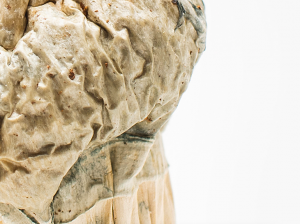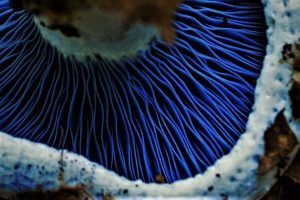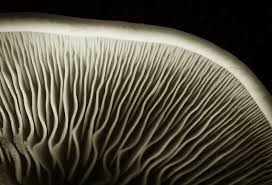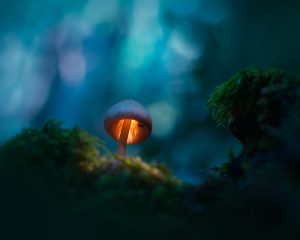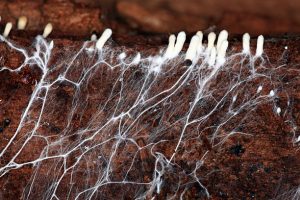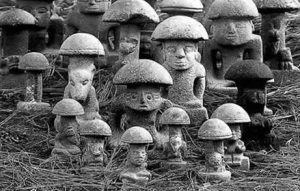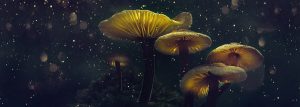If you’re looking at getting into microdosing magic mushrooms, you should know the difference between Psilocybin and Psilocin.
Psilocin vs Psilocybin:
Structurally, psilocybin and psilocin are both very similar forms of tryptamine alkaloids and are structural analogs of serotonin. Their difference is that psilocybin has a phosphate in position 4 of the chemical structure, while psilocin has hydroxyl.
This phosphate link makes psilocybin more stable than psilocin which oxidizes, as shown by blue black bruising that occurs while the mushrooms are being picked.This is actually the biggest sign that a fungi is a magic mushroom.
Psilocybin allows for the potency of the dried mushroom to remain stable for long periods of time. Fun fact: the words Psilocybe and *psilocybin* comes from the Greek words *psilo*, meaning *bald* and *cybe* meaning *head*. This could stem from the appearance of shrooms looking like bald heads. Psilocybin was actually isolated by Swiss chemist Albert Hoffmann from a specimen of Psilocybe mexicana.

Fresh specimen of Psilocybe bohemica (aka P. Serbica) growing in the wild. Notice the bluish bruising flesh, sign of psilocybin presence.
Once ingested, psilocybin is converted into psilocin in a process of dephosphorylation both in the stomach utilizing the available acids and within the intestines, kidneys, and blood using enzymes and other non-specific esterases. Dephosphorylation is the removal of a phosphate from an organic compound. The psilocin is distributed throughout the body via the blood steam where, being lipid(fat) soluble, it crosses the blood-brain barrier before binding to serotonin receptors.
To date, the most widely studied interaction is thought to be specifically with the 5-HT2A receptor. Once the Psilocin has bound to the 2A receptor, it stimulates the excessive release of the neurotransmitter in neuronal avalanches. These avalanches are synchronized, organized activity which produce neurobiological and physiological similarities to what the body experiences during REM sleep. A leading researcher in psychedelics Dr. Robin Carhart-Harris from he Imperial College, London, references the similarities between REM dreaming and the psychedelic experience within the brain, “I was fascinated to see similarities between the pattern of brain activity in a psychedelic state and the pattern of brain activity during dream sleep, especially as both involve the primitive areas of the brain linked to emotions and memory.
People often describe taking psilocybin as producing a dreamlike state and our findings have, for the first time, provided a physical representation for the experience in the brain.”
Psilocybin vs Psilocin: 3 Key Facts
In a study of the pharmacodynamics of classic hallucinagens, Baumeister et.al perceived 3 predominate effects of psychedelics in the brain:
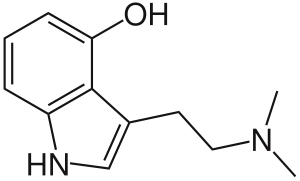
Molecular structure of Psilocin
1. Normal serotonergic tone in the brain is maintained by the Raphe nuclei that have numerous projections to the prefrontal cortex and subcortical structures. Classical hallucinogens may disrupt this through several mechanisms, including binding with Raphe nuclei presynaptic 5HT1A receptors, altering serotonergic output to the rest of the brain.
2. Hallucinogen binding with postsynaptic 5HT2A receptors in cortical neurons, particularly at cortical layer V, may alter prefrontal glutamatergic signalling, and change cellular functioning through alteration of protein expression, with complex manifestations in consciousness.
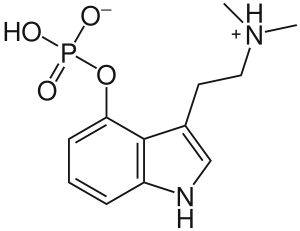
Molecular structure of psilocybin
3. The prefrontal cortex ordinarily limits sensory input through activation of intermediary GABAergic neurons in the reticular nucleus. Hallucinogen binding disrupts this process through binding with reticular postsynaptic 5HT2A receptors, altering sensory information to the cortex and the intrinsic activity of the sensory cortices.
These 3 principal events seem to be what occurs during psychedelic experiences.
Suppression of parts of the brain which usually act to filter out, or block, certain stimuli from being processed in the brain allow for more sensory data into a persons consciousness causing novel thought patterns, unique cross-connections, hallucinogenic effects, and altered perception. Psilocin interacts with both excitatory and inhibitory receptors to augment or inhibit neurotransmission. In the more primitive areas of the brain, the hippocampus and anterior cingulate cortex, linked to emotional thinking and memory, psilocybin increases function and syncretic activity; conversely, in the prefrontal cortex which is linked to high-level thinking, complex behaviours, and self-consciousness, these areas become uncoordinated and disjointed.
In short:
– Psilocin is linked to emotional thinking and memory
– Psilocybin increases function and syncretic activity
These effects have a dramatic impact on an individual’s immediate physiological state (the trip), but also seems to have lasting neurological and physiological benefits.



